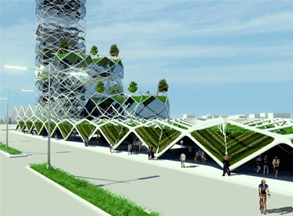“Green” Transit? Think Again
Transit skeptics who also care about the environment must be enjoying a nice breakfast of vindication this morning.
You worry a lot about the environment and do everything you can to reduce your carbon footprint the emissions of greenhouse gases that drive dangerous climate change.
So you always prefer to take the train or the bus rather than a plane, and avoid using a car whenever you can, faithful to the belief that this inflicts less harm to the planet.
Well, there could be a nasty surprise in store for you, for taking public transport may not be as green as you automatically think, says a new US study.
Its authors point out an array of factors that are often unknown to the public.
These are hidden or displaced emissions that ramp up the simple “tailpipe” tally, which is based on how much carbon is spewed out by the fossil fuels used to make a trip.
Environmental engineers Mikhail Chester and Arpad Horvath at the University of California at Davis say that when these costs are included, a more complex and challenging picture emerges.
In some circumstances, for instance, it could be more eco friendly to drive into a city – even in an SUV, the bete noire of green groups rather than take a suburban train. It depends on seat occupancy and the underlying carbon cost of the mode of transport.
The pair give an example of how the use of oil, gas or coal to generate electricity to power trains can skew the picture.
Boston has a metro system with high energy efficiency. The trouble is, 82 percent of the energy to drive it comes from dirty fossil fuels.
By comparison, San Francisco’s local railway is less energy efficient than Boston’s. But it turns out to be rather greener, as only 49 percent of the electricity is derived from fossils.
The paper points out that the “tailpipe” quotient does not include emissions that come from building transport infrastructure -railways, airport terminals, roads and so on nor the emissions that come from maintaining this infrastructure over its operational lifetime.
These often-unacknowledged factors add substantially to the global-warming burden.
Droolworthy Eco Strctures
The Dragonfly is a 128-floor vertical farm concept that will definitely get locavores drooling. Conceived by Vincent Callebaut Architectures, the building supports housing, offices, laboratories and and twenty eight different agricultural fields. It completely sustains itself using solar-power, wind-power, and captured rain water.
This stackable skyscraper concept designed by Jorge Hernandez de la Garza is eco-Tetris for the ever-growing Mexico City. The Vertical Park has sky gardens, space for both public and private use, and it recycles all of its own water.
Caribbean Coral Reefs ‘Flattened’ Over The Past 40 Years
You know those underwater pictures of pretty branched coral rising up from reefs in the Caribbean? Well that lovely coral is all but gone.
Recent research suggests bran-ched coral, which looks like underwater trees, has been replaced by short, rival species.
The culprit? In part, climate change. Researchers from the University of East Anglia poured over 500 surveys from the past 40 years. About 200 Caribbean reefs were included in the surveys examined.
Researchers discovered that the “flattening” of the reefs began in the late 1970s when white-band disease plagued reefs, killing 90 percent of elkhorn and staghorn corals-some of the most spectacular of the branched bunch.
Then a decade ago, most of the remaining branched coral was killed by widespread bleaching.
So-called weedy coral species-small, with short life spans-moved in and choked out the miniscule populations of branched coral that had somehow survived.
Bleaching occurs when coral expel algae, usually because the water temperature is too warm, which we know is linked to climate change.
Branched coral is now found on fewer than 25 percent of Caribbean reefs, a stark contrast to the relatively healthy reefs in the Indian Pacific, where human habitation is sparse.






